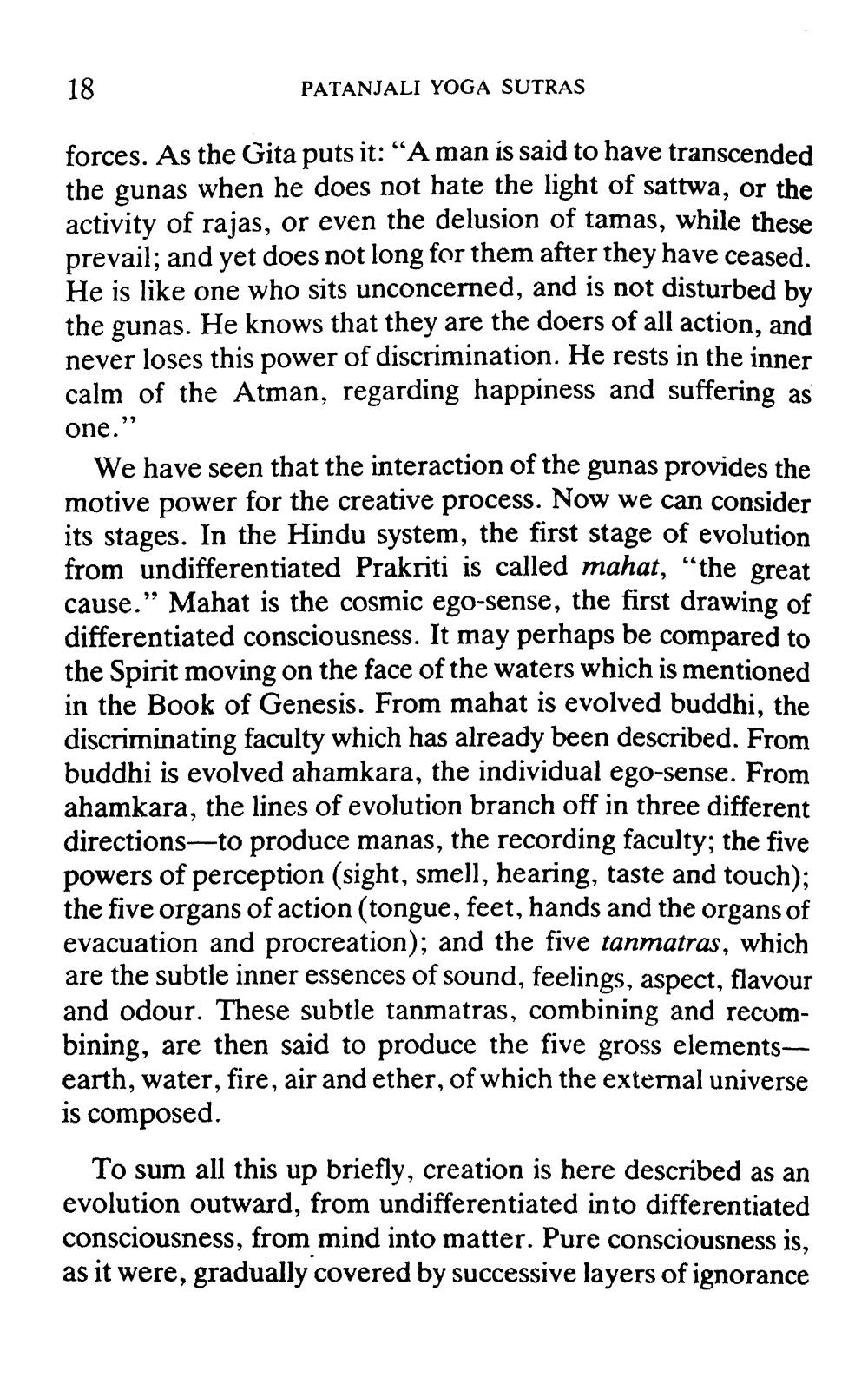________________
18
PATANJALI YOGA SUTRAS
forces. As the Gita puts it: "A man is said to have transcended the gunas when he does not hate the light of sattwa, or the activity of rajas, or even the delusion of tamas, while these prevail; and yet does not long for them after they have ceased. He is like one who sits unconcerned, and is not disturbed by the gunas. He knows that they are the doers of all action, and never loses this power of discrimination. He rests in the inner calm of the Atman, regarding happiness and suffering as one."
We have seen that the interaction of the gunas provides the motive power for the creative process. Now we can consider its stages. In the Hindu system, the first stage of evolution from undifferentiated Prakriti is called mahat, “the great cause." Mahat is the cosmic ego-sense, the first drawing of differentiated consciousness. It may perhaps be compared to the Spirit moving on the face of the waters which is mentioned in the Book of Genesis. From mahat is evolved buddhi, the discriminating faculty which has already been described. From buddhi is evolved ahamkara, the individual ego-sense. From ahamkara, the lines of evolution branch off in three different directions to produce manas, the recording faculty; the five powers of perception (sight, smell, hearing, taste and touch); the five organs of action (tongue, feet, hands and the organs of evacuation and procreation); and the five tanmatras, which are the subtle inner essences of sound, feelings, aspect, flavour and odour. These subtle tanmatras, combining and recombining, are then said to produce the five gross elements— earth, water, fire, air and ether, of which the external universe is composed.
To sum all this up briefly, creation is here described as an evolution outward, from undifferentiated into differentiated consciousness, from mind into matter. Pure consciousness is, as it were, gradually covered by successive layers of ignorance




